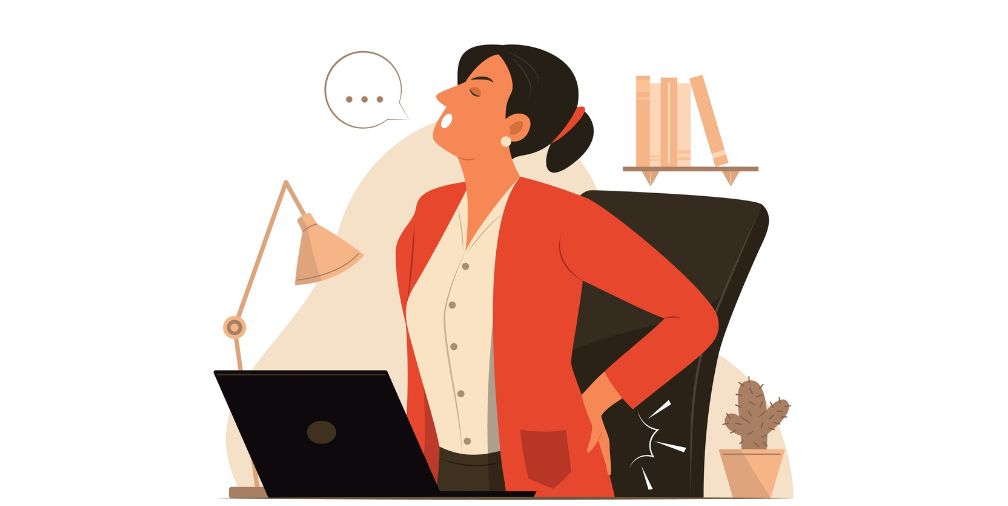How to Manage Back Pain
- Category: LiveSmart
- Posted On:
- Written By: Baldwin

Don't let an aching back get the best of you. Here are 6 tips to help ease the pain.
Do you find yourself saying "Oh my aching back" more often than you would like? If so, you're not alone. Back pain is the leading cause of disability in the world and it's likely that everyone will experience pain in their back at one time or another. Hopefully, the pain will be fleeting and will not linger. But no matter how long it lasts, experiencing back pain is not fun.
Back pain can wreak havoc on your day. It may be a minor inconvenience, causing you to wince in pain on occasion or when you move a certain way. Or it may be debilitating, resulting in missed work, extreme discomfort and the inability to perform certain activities. No matter how long the pain lasts and how intense it may be, there's no doubt that if you could do something to prevent or get rid of the pain, you would likely be happy to try it.
Here are 6 things that may help you avoid, alleviate or reduce back pain:
- Don't slouch. Poor posture can cause back pain. Stand upright with your shoulders back and abdomen pulled in. Keep your head level and in line with your body. When sitting, keep your back straight with your body supported against the back of your chair. Putting a pillow or rolled towel behind your lower back may help. Keep your feet flat on the floor and shoulders relaxed.
- Avoid movements that make pain worse. It may be best to limit certain motions that exacerbate symptoms. Avoid twisting motions or reaching for objects that are too far away. Don't lift anything too heavy and make sure when you lift items, you do so by bending your knees and keeping your back straight, rather than bending at the hips to lift from your back.
- Use ice or heat. To reduce inflammation and pain, ice may help during the first few days. Apply ice for up to 20 minutes at a time and repeat several times a day. Keep a thin towel between the ice and your skin. After a few days, heat may help by increasing blood flow to the affected area. It can also relax your muscles. Use a heating pad or take a warm bath or shower.
- Do light exercises. You may think you need to lay down and rest if your back is hurting, but staying idle for too long only makes things worse. Allow yourself a short rest period at most (1-2 days) but then start moving. Try gentle exercises like yoga, swimming and walking. Do some light stretching, but don't push too hard if pain gets worse.
- Ask a doctor about physical therapy. If back pain lingers or is chronic, physical therapy may help. A physical therapist can teach you how to do exercises that strengthen your core muscles, which takes some strain off your back. You'll also work on increasing flexibility and mobility, and will learn how to keep your back in proper alignment when you sit, stand and move.
- Sleep well. Sleep on a comfortably firm mattress and lay in a position that results in the least amount of pain. Many people find that sleeping on their sides is most comfortable. If you do so, place a pillow between your knees to relieve strain on your back. If you prefer sleeping on your back, place a pillow under your knees.
For more LiveSmart articles, visit www.McKenzieHealth.org/LiveSmart.
Copyright 2023 © Baldwin Publishing, Inc. Health eCooks® is a registered trademark of Baldwin Publishing, Inc. Cook eKitchen™ is a designated trademark of Baldwin Publishing, Inc. Any duplication or distribution of the information contained herein without the express approval of Baldwin Publishing, Inc. is strictly prohibited.
Date Last Reviewed: July 19, 2023
Editorial Review: Andrea Cohen, Editorial Director, Baldwin Publishing, Inc. Contact Editor
Medical Review: Perry Pitkow, MD
Learn more about Baldwin Publishing Inc. editorial policy, privacy policy, ADA compliance and sponsorship policy.
No information provided by Baldwin Publishing, Inc. in any article is a substitute for medical advice or treatment for any medical condition. Baldwin Publishing, Inc. strongly suggests that you use this information in consultation with your doctor or other health professional. Use or viewing of any Baldwin Publishing, Inc. article signifies your understanding and agreement to the disclaimer and acceptance of these terms of use.
